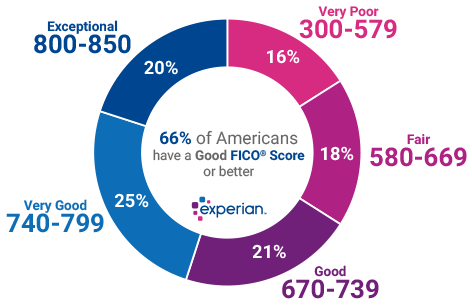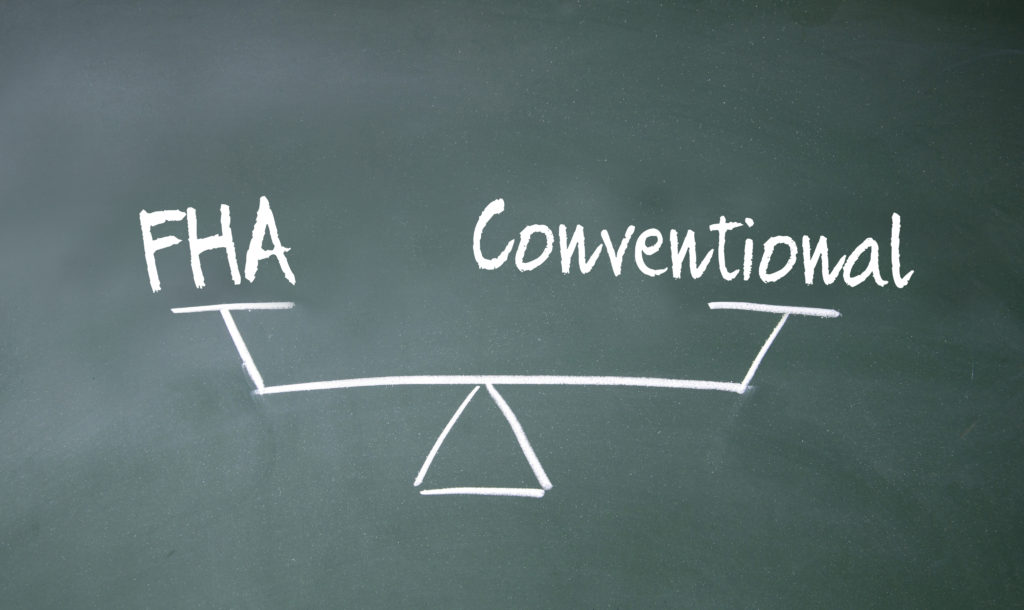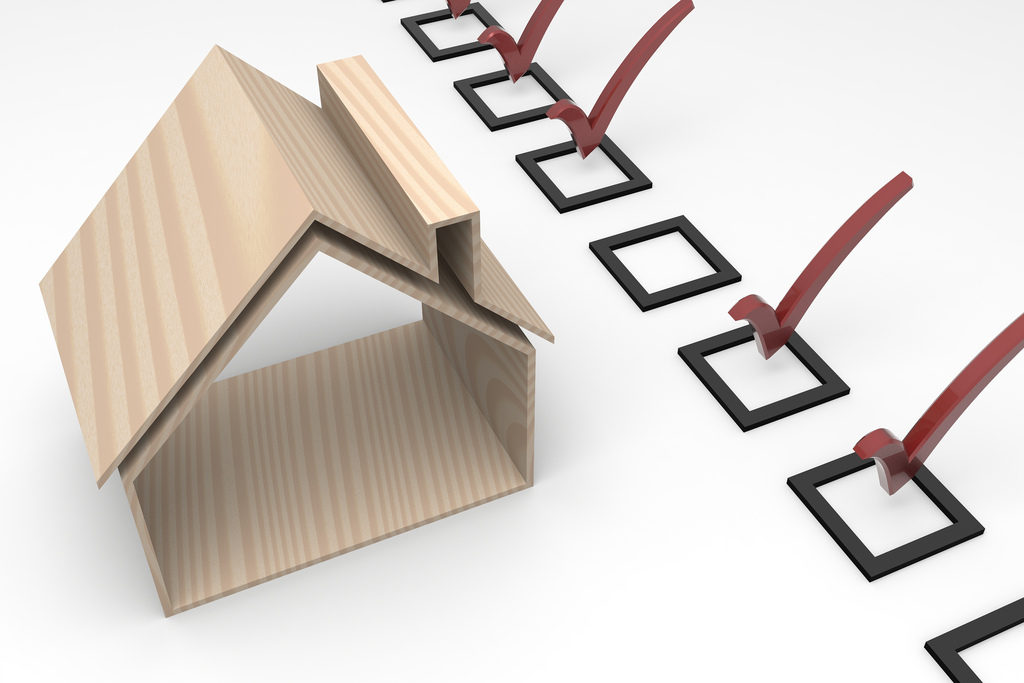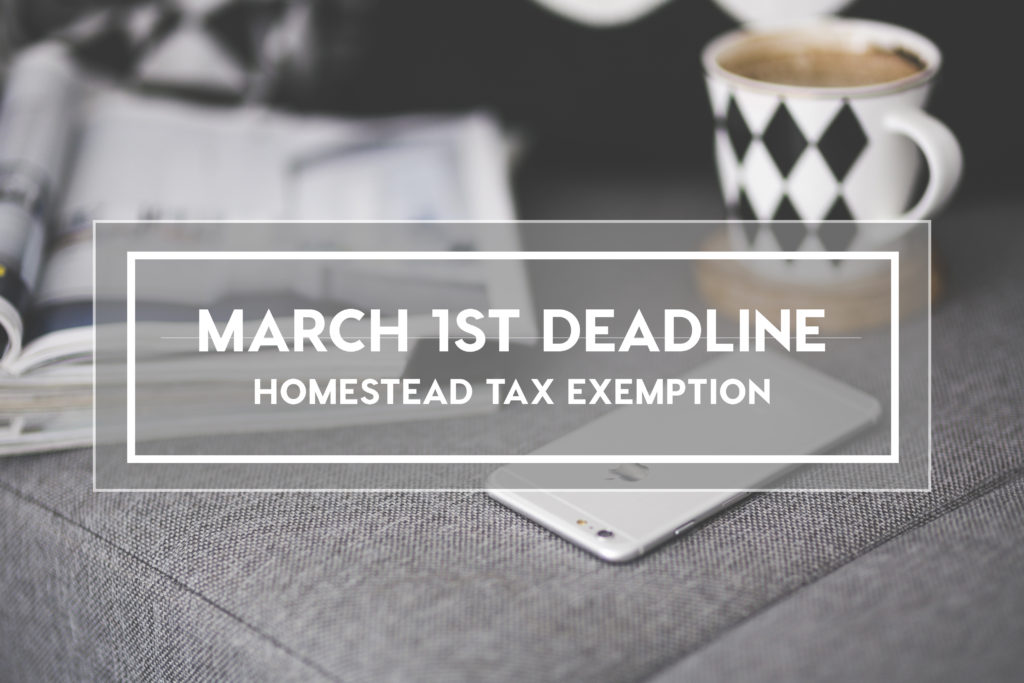1. Don’t Buy If You Plan to Move Soon
Millennials and young people, in general, are known for their tendency to move more frequently than Baby Boomers in order to follow new career opportunities. This can be a problem for homeownership. You must keep in mind that there are many up-front costs involved with buying a home, most significantly closing costs. Closing costs are typically 2-5 percent of the purchase price. So, on a $200,000 home, you may pay between $4,000 and $10,000 in closing costs. When you buy a home and then sell within a short period of time, you will have closing costs on both the purchase and the sale of your home.
If you don’t stay in the house long enough, you may not be able to build up enough equity to outweigh these costs, so you will actually lose money by purchasing a home rather than just renting. If you think there is a good chance that you may be moving to a different area in the near future, you may want to consider renting instead.
How long do you need to stay in a home to make it a profitable decision?
There is no perfect formula because there is no way to guarantee how the market will move during any given time period. However, a good rule of thumb is that you will nearly always make money buying a home when you stay in it for at least five years.
Again, this is not a hard fast rule. The area you live will play a role in this, due to differences in property taxes and the purchase price of your home. For a more customized analysis to your specific situation, check out www.smartassest.com. After you answer a few questions, the site will tell you exactly how long you would need to stay in your home for it to be better for you than renting.
2. Save Up Enough Cash

Buying a house takes money. You need to make sure you have plenty of it saved before you start the home buying process. Without enough liquid funds set aside, the purchase of your home could end up being a very stressful experience rather than a happy one. What all will you need to have cash set aside for?
Down Payment
I recommend, when possible, making at least a 5% down payment, and preferably more. Why? It automatically gives you 5% extra equity as wiggle room to remain profitable even during a housing market downturn.
Yes, I do know that there are first-time homebuyer programs that will allow you to buy a home with little to no money down. But if you end up needing to sell your home in 3 years and the market hasn’t moved up at all during that time, you’re going to need to put up some cash to cover the closing costs on the sale of your home.
Wondering how your home down payment will affect your retirement nest egg? Personal Capital has a cool “Scenario simulator” tool that can estimate how different like events like buying a home or paying for a wedding will impact your retirement portfolio.
Closing Costs
Closing costs are the second reason why you need to have available cash for your home purchase. As we discussed earlier, closing costs will typically be about 2-5 percent of the purchase price.
Moving-Related Expenses
When you move, there are lots of miscellaneous expenses that pop up, like needing to hire a moving company, buying new furniture and appliances, and necessary updates or repairs to make your new home livable. For example, our home was a fixer-upper, so we had to put on a new roof, plus sand down and re-polyurethane the wood floors. We also had to buy a refrigerator, washer and dryer, and lawn equipment.
Ongoing Repairs
The biggest difference between renting and owning is that when things break, you have to pay for them. Plumbing, electric, and AC repairs, all fall in your court now.
This is the one area I think many first-time homebuyers completely underestimate. They spend nearly every last drop of their savings on their down payment and their closing costs and then have nothing left over to cover repairs when they pop up. A new AC alone costs several thousand dollars!
If you can’t finish your house purchase and still have at least a few thousand dollars left over in savings, I would wait and continue saving. I know it may be frustrating for you right now, but you will thank me later when are able to live with peace of mind in your new home.
How does anyone save that much money?
You may have to temporarily get a little crazy with your savings, perhaps by adding a second part-time job or dramatically cutting your expenses. One measure that Kendall and I took was to live off of my income alone and dedicate her paycheck solely to the home fund.
At the time, Kendall had a part-time childcare job that by no means provided a hefty monthly income. Looking back, I think her job was bringing in about $800 in monthly income. But because we were saving the entire check, it made a HUGE difference. In 12 months alone, we had saved right around $10,000.
Developing this habit also helped us later on. When our son Landon was born, Kendall wanted to stop working and stay home with him. Since we had never used her income for regular bills, it was easy for us to make the transition to her staying home. It helped us reach our financial and personal goals. And it all stemmed from us talking about those goals together, which is something we stress here at The Wallet Wise Guy.
3. Decide On a Monthly Payment Target
Many young homebuyers tear off in a house-shopping frenzy, and they’ll see advertisements for new-home communities that say something like, “Why would you rent when you could own a home for $800 a month?” But these ads are completely misleading. They almost always leave out taxes and insurance in their calculations. Make sure you take all costs into account when you are deciding how much home you can afford.
You also don’t want to listen to what the mortgage lender says you are “pre-qualified” for. Only you can decide what you can really afford. As a rule of thumb, I suggest taking whatever number your lender gives you and cut that by 10 percent. So if a lender tells you that you can afford a $150,000 loan, plan to borrow around $135,000.
You need to begin by looking at your current budget to see what mortgage payment you can afford. If you don’t have a budget yet, you need to start one immediately. Start by reading our guide on how to make a fool-proof budget. If you want to do a budget on paper, you can download one here. If you’d prefer to use a computer or phone, here are some great options to check out:
Once you know what your monthly payment price target is, you can use a mortgage calculator, to get a good idea of how much any particular home will cost you. If the home in question is priced too high to give you the monthly payment that you need, then move on. DON’T bend your monthly payment target so that you can buy a house you love that’s outside of your price range. There will be plenty of other houses that you will love AND be able to afford.
4. Check Your Credit Score

Perhaps you’ve heard that there are lenders out there who will write mortgages for people who don’t have credit scores by evaluating their income, bills, and payment history. While this is technically true, those lenders are few and far between. On their website, FICO states that 90% of top lenders use your credit score when making lending decisions.
For the vast majority of lenders, you’re going to need to have a credit score.
And the higher the credit score, the better the interest rate you will receive. This chart from FICO shows how the interest rate you will be offered changes based off of your credit score range. As you can see, a score of 620 vs. 760 could mean a difference of over $200 a month in mortgage cost. This is a big deal!
And the interest discrepancy would be even worse if you had found a sleazy lender willing to give you a “junk loan” (a loan given to borrowers with a score in the 500s). Plus, the junk fees for these loans are enormous.
As I wrote about here, my wife and I had to delay our home purchase an entire year because we had no credit score whatsoever. If you are in a similar situation, you can quickly begin building credit by enrolling in a “fresh start” program at a credit union or by getting a “secured card” from your bank. With a secured card, they will graduate you up to an unsecured card after a certain number of on-time payments (usually between 6 and 12), which will cause your credit score to rise much more rapidly.
What Score Do You Need?
Do you need a credit score over 800 to qualify for good interest rates? No. Although it definitely wouldn’t hurt to have an 800 score, the truth is you should be able to qualify for some of the best interest rates with a score above 720.
How do you know if you have a score over 720? Well, two years ago, I would have told you to sign up for a free account with Credit Karma and check your credit score regularly there. That’s still not a bad strategy, but just keep in mind that the score they give will be an estimation, NOT your official FICO score (the score that the majority of lenders use to determine your interest rate). If you use Credit Karma, shoot for a score that’s 10-15 points higher than what you need, in case there is a large discrepancy between their score and your FICO.
How to Get Your Actual FICO Score
You can get your actual FICO score through FICO themselves, but that will cost you. Thankfully, there has been a major shift in the past couple of years in the financial industry. Many banks, credit unions, and credit card companies now will give you your FICO score for free as a member “benefit.” Banks should have been giving their customers their credit scores for free years ago, but I’m glad to see that this is finally starting to happen.
No matter what means you use to get ahold of your score, make sure you know it BEFORE you start calling up lenders. Also, make sure you check Bankrate to see what the current interest rates are. If you know you have a good credit score and you aren’t being offered a prime rate, don’t accept it. Just hang up and call another lender.
5. Find the Right Real Estate Agent
Once you have a couple of neighborhoods in mind, try to find a real estate agent who “farms” that geographical area. Even if you have a friend who you’ve used before as a real estate agent, they may not be as familiar with the homes in the particular area that you are looking to move to now. Agents with expertise in the neighborhood you have targeted can you tell you why not to buy on a certain street or why the kitchen in a house is smaller than what buyers expect in that area.
It’s easy to tell who these agents are because as you drive through the neighborhood, you’ll see their signs again and again. Go ahead and give a few a call and set up interviews. I recommend interviewing 3 agents, if possible. Make sure that the agent understands that they are representing you, not the seller. This is known as being a “buyer’s agent.”
Normally, having a buyer’s agent won’t cost you any money – in fact, it should only save you money because you’ll have an expert negotiating on your behalf. The only exception would be if you ended up buying an FSBO (For Sale By Owner) home, in which case, you may end up needing to pay your agent a 3% sales commission.
6. Decide Which Loan Product You Will Pursue

There are several different types of mortgage products that you can choose from. The most commonly used are Conventional, HSA, VA, USDA, or Jumbo. Two new programs called HomeReady and Home Possible have also recently been announced by Freddie Mae and Fannie Mac. Let’s take a quick look at the pros and cons of each.
Conventional Loan
Of all the loan types, my favorite one for you to choose would be a boring, old Conventional Loan. Why? Because you will be offered the best interest rates, you will have the least fees, and it offers you the most flexibility.
And, no you don’t have to put down a 20% down payment to qualify for a Conventional Loan. You simply have to pay monthly mortgage insurance (MIP) if you put down less than 20%. My wife and I put down 5% on our Conventional Loan and had about a $48 MIP included in our monthly mortgage, although with a more expensive home it can be much higher.
Getting Rid of MIP
Typically, MIP stays until you have paid down 20% of your loan. But with a Conventional Loan, you can get rid of MIP much sooner! You can request to have MIP removed once you reach an 80% home value to loan ratio or lower.
To explain, let’s say you purchased your home for $100,000 and put 5% down ($5,000), giving you a loan of $95,000. Then let’s say that 2 years later, after making several home improvements and the home market in your area going up, your home is now worth $120,000. You would now have a home value to loan ratio of 120,000/95,000, or 79%, meaning you could qualify to get your MIP removed.
You can accomplish this through writing a letter to your current lender or through refinancing. Either way, a home appraisal will be required to prove that your home has risen enough in value to bring you below the 80% home value to loan mark.
Personally, we refinanced our home after only 2 years. We were able to get a lower interest rate AND we were able to get rid of our MIP during the process because we had reached the 80% mark. Talk about a win-win! This is a huge money-saving strategy that so many young homeowners don’t even know is possible!
FHA
FHA loans are very popular because you can get them for as little as 3.5% down. If you are planning on being in your home for 4-7 years and have a credit score below 620, FHA loans can be a great choice. But if you are planning to stay in your home any longer than that and have a credit of 620 or above then I prefer Conventional Loans, or the HomeReady and Home Possible loans which we will discuss next.
Why? Because new regulations require you to pay PMI (FHA’s version of MIP) for the life of the loan.
You simply can’t get rid of it. Ever.
PMI can easily cost over $100 a month, so this would mean over $1,200 a year being flushed down the toilet, over and over again.
HomeReady and Home Possible
These two new housing programs announced by Fannie Mae and Freddie Mac compete directly with FHA loans. You can actually get a loan for as low as 3% down with these new loan products. And get this…mortgage insurance CAN be canceled once you reach 20% equity in your home! They really are quite competitive products.
Are there catches? Two small ones. First, you have to have a score of at least 620 to qualify for HomeReady and 640 to qualify for Home Possible, while you can qualify for an FHA 3.5% down loan with a credit as low as 580. The only other catch is to remind you of the risks that we covered in point #2 that come with putting down a small down payment on your home purchase.
VA or USDA
While many people who meet the requirements for VA and USDA loans are attracted to them because they offer very low to no money-down loans, I typically don’t recommend them because they often have higher fees and don’t offer the best interest rates.
Jumbo Loans
Unless you plan on purchasing a home that costs more than $453,100, this isn’t a loan that you’ll need.
Fixed Rate vs ARM Mortgages
If you plan to stay in your home for the long-term, I always recommend going with a fixed-rate mortgage. If you can afford the payments on a 15 or 20-year fixed, then go for it, as it will save you a lot of money in interest. Otherwise, go with a 30-year fixed.
However, if think you’ll only be staying in your home for 7 years or less, you may want to evaluate an ARM loan, such as a 5/1 ARM or 7/1 ARM. With these loans, you pay a low interest rate for 5 or 7 years, and then an adjustable rate for the remainder of the loan (25 or 23 years).
ARM loans usually have considerably lower interest rates than 30-year fixed loans, saving you a lot of money. They may not save you that much on interest compared to a 15-year fixed rate, but your monthly payments will be much lower with an ARM due to their 30-year term. This could be a great loan product to use for purchasing a “starter” home that you know you want to sell within 5-7 years anyway.
The downside? If you are still living in the home at the end of 5 or 7-year term, your mortgage rate will begin adjusting up or down with the market on an annual basis. Your mortgage payment could rise dramatically throughout the life of the loan. This is why if you plan to stay in your home on a long-term basis, I would not trade the security of a fixed-rate loan for the up-front savings of an ARM.
7. Shop for a Mortgage Lender
It never ceases to amaze me that people will often shop for a home for months, and will look at hundreds of homes before putting in an offer, and then will spend 5 minutes picking out their lender. It makes no sense! But to give people a little bit of a break, many just don’t know that you can shop around for the best mortgage lender. But you definitely can. Don’t just go with who your real estate agent recommends.
Finding the Right Lender
First, get online and look up lenders in your area that have good reviews. Make sure that they regularly get to the closing table on time. Then I recommend calling to get interest-rate quotes from FOUR of the companies that you identified as good choices.
If this is your first home purchase, I also highly recommend that you choose a lender from the MCC Tax Credit approved lenders list. The MCC Tax Credit can literally save you up to $2,000 a year, so even if the closest MCC-approved lender is a further distance from you than other lenders, it could be worth it to go with them. For more information, check out my MCC Tax Credit Guide, complete with links to each state’s MCC guidelines.
Pre-Qualified vs Pre-Approved
It doesn’t usually take more than a 5-minute phone call for a loan officer to tell you that you are “pre-qualified” for a certain loan amount. You give them your social security number, they run your credit, and…BOOM…you are now pre-qualified for X amount.
Don’t trust this number!
The loan officers work off commission and are notorious for giving pre-qualification quotes that are far too high in hopes of landing the client. Why is this such a dangerous thing? Because you may get all excited and put in an offer on a house based off of your “pre-qualification” amount, only to be rejected during the underwriting process.
This is why I recommend that you seek pre-approval with your lender rather than pre-qualification. With most lenders, you will need to provide more documentation to get pre-approved, such as pay stubs, and tax forms. But once the documents have been received and evaluated, your lender will pre-approve you for a particular loan amount and your loan officer will typically send you a pre-approval letter.
This is a nice letter to have with you when you make your offer on your home because it shows that you have done more up-front work than your average homebuyer. It can make your offer more appealing than others because the home seller knows that there is a high probability your offer will get through underwriting and make it to the closing table. If during your initial phone call, a loan officer tells you that his or her company does not offer pre-approvals, I would keep looking for a different lender.
Closing Costs and Fees
Finally, ask the lender about closing costs and fees. Once you’ve chosen a particular lender, and you begin the underwriting process, lenders are required by law to provide you with a Loan Estimate and Closing Disclosure Form. Make sure everything on these forms matches up with your loan officer’s promises and be sure to ask questions about any fees that you don’t understand or seem out of place.
8. Schedule a Home Inspection
After you put in an offer on a home, you will have a period of usually around 10 days to complete a home inspection. One common point of confusion is the difference between a “Four-Point Inspection” and a full home inspection.
Home insurance companies will often require a four-point inspection to be performed on your home as a prerequisite for insuring the home. This is especially common if you are buying an older home. These inspections cover HVAC, Electric, Plumbing, and Roofing – the four areas of the home that most commonly result in insurance claims when they break:
A four-point inspection is NOT the same as a buyer’s full home inspection. A full home inspection is much more thorough and is the only inspection that technically gives you the right to back out of your home offer if it surfaces a problem. It costs more, but it’s worth the extra money to know exactly what you are getting into.
Can you just send your insurance company the full inspection report? I would not recommend this, even if you could. A full home inspection report could include many minor issues that you are fine with dealing with over time, but you wouldn’t necessarily want your insurance company having. Why give them more opportunities to find something to reject you for? The safest choice is to pay for both inspections separately.
Don’t know who to hire for your inspection? Your real estate agent will probably have a suggestion, but just know that reputable home inspectors will typically be members of one of these professional organizations: the American Society of Home Inspectors or the International Association of Certified Home Inspectors.
9. Shop for Home Insurance
Your lender will require that you have homeowner’s insurance in place by Day 1, so that puts you in a bit of a time crunch to get insurance secured in between the contract signing and the closing date. For this reason, I recommend that this be your first priority right after the inspection clears. Many homebuyers don’t even consider the fact that they can shop for their home insurance, but you should because rates can vary dramatically.
For homeowners’ insurance, you typically have to work through brokers. I recommend that you call 3 or 4 different home insurance brokers in your area. Brokers make deals with insurance companies to write policies for them in exchange for a cut of the policy premium.
Here’s the thing: virtually NO brokers write for EVERY insurance company available in your state.
This is why it is so beneficial to call more than 1 broker. In each state, there is usually 1 insurance company that offers the most affordable policies. If the first broker you call happens to not have a deal to write policies for that company, then you will be quoted a premium that is too high.
When Kendall and I first bought our home, we didn’t understand fully how the homeowners’ insurance system worked, plus we felt rushed to get the insurance squared away before closing. So we called up a broker that someone we knew recommended and went with the most affordable quote that he gave us.
After our first year in the home, I decided to shop our policy around. Come to find out, our current broker did not write for the most popular and affordable insurance company in our state.
By calling another broker who did, we were able to cut our insurance bill in half from over $1,600 a year to just over $800 – an $800 savings!
I know I sound like a broken record, but it really does pay to shop.
10. File for the Homestead Exemption
A “homestead exemption” reduces the value of a homeowner’s primary residence for state tax purposes. The homestead exemption rules vary widely by state, but all but four states (Delaware, New Jersey, Pennsylvania and Rhode Island) have some homestead exemption law in place.
In Florida, for example, homeowners can receive an exemption of up to $50,000 and their home’s just value cannot be raised more than 3% from one year to the next.
You don’t automatically receive this exemption. You must file for it at your county’s property appraiser’s office. The deadline to file in most states is in March or April. Many new homeowners are surprised to find that if they don’t file for the homestead exemption, their mortgage actually goes up significantly after their first year in the home.
Here’s why. If the previous owner of your home had a homestead exemption in place, your first year’s mortgage will be based on that low property tax number. But once your lender receives the new and higher annual property tax bill, your mortgage will shoot up.
My brother-in-law had this very thing happen to him, and it raised his mortgage over $200 a month. Talk about sticker shock! He immediately filed for his homestead exemption, but he didn’t feel any relief in his monthly mortgage bill for another 12 months. Why? Because property tax bills are only generated once a year.
If you are fortunate enough to live in a state that offers a homestead exemption, don’t wait to file. Make it your goal to get it taken care of within a month of your closing date.
Once you’ve finished that final step, guess what you get to do next? Enjoy your home! And you can enjoy it with great peace of mind because you’ll know that you’ve bought your first home the smart way. Good luck!




This is such an incredible and practical article.
Any person that is thinking about buying a home should reach this article.
Thanks! 🙂
As a mid 20’s millennial looking to get a home soon, this is the first post I’ve come across that talks about things I’ve never even heard of! Thank you so much for this Clint!
Sure thing, thanks for reading!